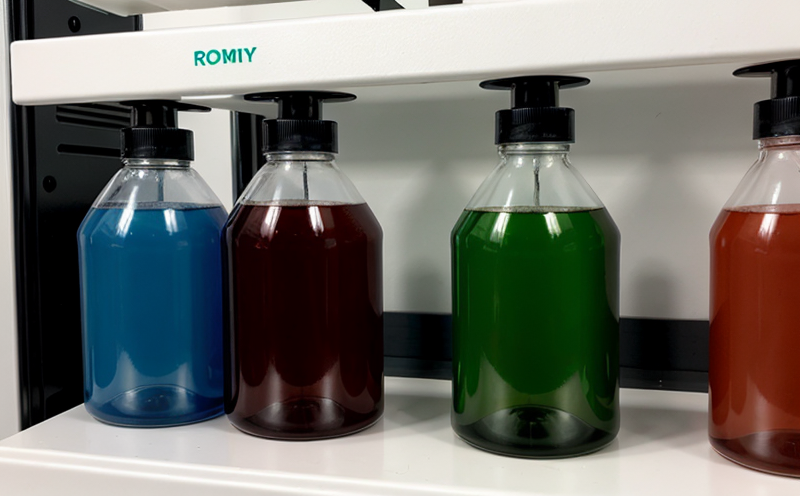GB T 24131 Rubber Reactivity Testing in Industrial Materials
The testing outlined by GB/T 24131 is crucial for ensuring the safety and performance of rubber-based products used across various industrial sectors. This standard provides a standardized method to determine the reactivity of rubber materials with other chemicals, which can significantly impact their durability and compatibility within industrial environments.
Rubber reactivity testing plays a pivotal role in quality control processes by identifying potential risks associated with the interaction between rubber compounds and other components used in manufacturing. This is particularly important when dealing with complex systems where multiple materials come into contact during processing or end use. By adhering to this standard, manufacturers can avoid costly failures due to unforeseen chemical reactions that could compromise product integrity.
The test procedure described by GB/T 24131 involves exposing samples of rubber compounds to specific chemicals under controlled conditions. The aim is to observe any changes in the physical properties or structure of the rubber as a result of these interactions. These changes can indicate how well the rubber will perform when subjected to similar conditions during actual use.
One key aspect of this test is specimen preparation, which must be carried out meticulously according to the standard's specifications. This includes ensuring that each sample accurately represents the intended material composition and that all surfaces are prepared uniformly for testing. Proper handling ensures consistent results across multiple trials, enhancing reliability.
The instrumentation used in performing GB/T 24131 tests is sophisticated yet straightforward, designed to measure precise changes within the rubber samples during interaction with test chemicals. Advanced analytical tools such as Fourier Transform Infrared Spectroscopy (FTIR) and Differential Scanning Calorimetry (DSC) are often employed to detect molecular alterations or shifts in thermal behavior indicative of reactivity.
Acceptance criteria for GB/T 24131 specify thresholds beyond which rubber samples would be deemed unsuitable for certain applications. These criteria serve as benchmarks against which test results are compared, providing clear guidelines on whether the rubber exhibits acceptable levels of reactivity under given conditions.
In real-world scenarios, compliance with this standard ensures that industrial materials containing rubber components meet stringent safety standards and perform reliably over extended periods without degradation from unwanted chemical reactions. This is essential for maintaining high-quality products across diverse industries including automotive, construction, and manufacturing sectors where robustness and longevity are critical factors.
Understanding the intricacies of GB/T 24131 rubber reactivity testing requires insight into its application within broader contexts such as quality assurance practices and regulatory requirements. For those responsible for overseeing industrial material development or production processes, familiarity with this standard can enhance decision-making capabilities regarding material selection and process optimization.
Moreover, staying abreast of updates to standards like GB/T 24131 allows stakeholders to anticipate changes in industry trends and best practices related to rubber reactivity testing. This proactive approach fosters continuous improvement within organizations dedicated to producing top-tier industrial materials.
Why It Matters
The importance of GB/T 24131 rubber reactivity testing cannot be overstated, especially in industries where safety and reliability are paramount. By evaluating how rubber interacts with other chemicals, this test helps prevent potential hazards that could arise from unintended reactions during manufacturing or usage.
For quality managers, compliance officers, R&D engineers, and procurement professionals involved in industrial material development or supply chain management, understanding the significance of this testing underscores its role in ensuring product safety. It also highlights how adherence to such standards contributes to maintaining a reputation for excellence among competitors.
In essence, GB/T 24131 rubber reactivity testing serves as a critical tool for identifying vulnerabilities early on, thereby enabling timely interventions that safeguard both personnel and equipment from risks associated with chemical interactions involving rubber components. Its relevance extends beyond mere compliance; it represents an investment in long-term success by fostering trust among customers who value reliability.
Why Choose This Test
Selecting GB/T 24131 rubber reactivity testing offers several compelling advantages that set it apart from other methods. One of the primary reasons is its comprehensive approach to evaluating how rubber behaves under various conditions, providing a holistic view of potential issues before they become problematic.
Another significant advantage lies in its alignment with international standards, which ensures consistency and comparability across different laboratories worldwide. This makes it easier for organizations operating internationally or engaging in cross-border collaborations to ensure compatibility and interoperability between their processes.
The precision of the test results obtained through GB/T 24131 further enhances confidence in decision-making regarding material selection and process optimization. Accurate data allows stakeholders to make informed choices based on reliable information, reducing uncertainty and associated risks significantly.
In addition, choosing this standardized testing method demonstrates commitment to industry best practices and regulatory compliance. It sends a strong message to customers about an organization's dedication to quality and safety standards, thereby strengthening brand reputation.
Competitive Advantage and Market Impact
The adoption of GB/T 24131 rubber reactivity testing can provide significant competitive advantages in terms of product differentiation and market positioning. By incorporating this standard into their quality assurance protocols, companies can offer products that meet or exceed industry expectations, setting themselves apart from competitors who may not adhere to such stringent criteria.
Moreover, compliance with these standards fosters trust among customers by assuring them of the reliability and safety of purchased materials. This increased confidence translates into stronger customer relationships and potentially higher sales volumes as businesses gain a reputation for delivering high-quality products.
From an operational standpoint, implementing GB/T 24131 also helps streamline processes, ensuring consistency across all stages of production from raw material selection to final product assembly. This efficiency not only improves overall productivity but also reduces costs associated with rework or scrap due to non-compliance issues.
In conclusion, embracing GB/T 24131 rubber reactivity testing is more than just a compliance requirement; it represents an opportunity for growth and innovation within the industrial materials sector. By staying ahead of trends and adhering to best practices, organizations can secure their competitive edge while contributing positively towards sustainable development goals.





